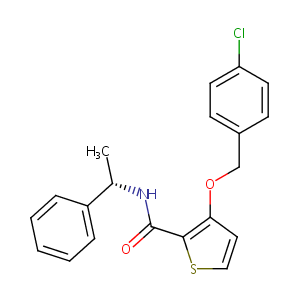| DOT Name |
DOT ID |
UniProt ID |
Mode of Action |
REF |
|
Cytochrome P450 3A4 (CYP3A4)
|
OTQGYY83
|
CP3A4_HUMAN
|
Increases Oxidation
|
[9] |
|
Granulocyte-macrophage colony-stimulating factor (CSF2)
|
OT1M7D28
|
CSF2_HUMAN
|
Decreases Secretion
|
[10] |
|
Interleukin-5 (IL5)
|
OTAFPSCO
|
IL5_HUMAN
|
Decreases Secretion
|
[10] |
|
Granulocyte colony-stimulating factor (CSF3)
|
OT9GC6TP
|
CSF3_HUMAN
|
Increases Secretion
|
[10] |
|
Fibroblast growth factor receptor 1 (FGFR1)
|
OT4GLCXW
|
FGFR1_HUMAN
|
Decreases Expression
|
[11] |
|
C-C motif chemokine 2 (CCL2)
|
OTAD2HEL
|
CCL2_HUMAN
|
Increases Secretion
|
[10] |
|
Erythroid transcription factor (GATA1)
|
OTX1R7O1
|
GATA1_HUMAN
|
Decreases Expression
|
[10] |
|
Transcription factor JunD (JUND)
|
OTNKACJD
|
JUND_HUMAN
|
Decreases Expression
|
[10] |
|
Transcription factor PU.1 (SPI1)
|
OTVCA1D0
|
SPI1_HUMAN
|
Increases Expression
|
[10] |
|
Interleukin-10 (IL10)
|
OTIRFRXC
|
IL10_HUMAN
|
Increases Secretion
|
[10] |
|
Fibroblast growth factor receptor 3 (FGFR3)
|
OTSAXDIL
|
FGFR3_HUMAN
|
Affects Expression
|
[11] |
|
Endothelial transcription factor GATA-2 (GATA2)
|
OTBP2QQ2
|
GATA2_HUMAN
|
Decreases Expression
|
[10] |
|
Rhombotin-2 (LMO2)
|
OTCC370G
|
RBTN2_HUMAN
|
Decreases Expression
|
[10] |
|
Interleukin-13 (IL13)
|
OTI4YS3Y
|
IL13_HUMAN
|
Decreases Secretion
|
[10] |
|
DNA-binding protein inhibitor ID-1 (ID1)
|
OTKGNZN5
|
ID1_HUMAN
|
Increases Expression
|
[10] |
|
CCAAT/enhancer-binding protein alpha (CEBPA)
|
OTOM9OE4
|
CEBPA_HUMAN
|
Increases Expression
|
[10] |
|
CCAAT/enhancer-binding protein delta (CEBPD)
|
OTNBIPMY
|
CEBPD_HUMAN
|
Increases Expression
|
[10] |
|
DNA-binding protein inhibitor ID-2 (ID2)
|
OT0U1D53
|
ID2_HUMAN
|
Increases Expression
|
[10] |
|
Krueppel-like factor 1 (KLF1)
|
OT1FK08U
|
KLF1_HUMAN
|
Decreases Expression
|
[10] |
|
CCAAT/enhancer-binding protein epsilon (CEBPE)
|
OTKZA25M
|
CEBPE_HUMAN
|
Increases Expression
|
[10] |
|
Transcription factor NF-E2 45 kDa subunit (NFE2)
|
OTLM94BI
|
NFE2_HUMAN
|
Decreases Expression
|
[10] |
|
Zinc finger protein Gfi-1b (GFI1B)
|
OTRDW8YO
|
GFI1B_HUMAN
|
Decreases Expression
|
[10] |
|
Zinc finger protein Gfi-1 (GFI1)
|
OT9HB9H8
|
GFI1_HUMAN
|
Increases Expression
|
[10] |
|
Sal-like protein 4 (SALL4)
|
OTC08PR5
|
SALL4_HUMAN
|
Affects Binding
|
[12] |
|
Cytochrome P450 2C19 (CYP2C19)
|
OTFMJYYE
|
CP2CJ_HUMAN
|
Increases Oxidation
|
[9] |
|
Cytochrome P450 2J2 (CYP2J2)
|
OTJBTEH8
|
CP2J2_HUMAN
|
Increases Oxidation
|
[9] |
|
Protein cereblon (CRBN)
|
OTXH9MDC
|
CRBN_HUMAN
|
Increases Response To Substance
|
[13] |
| ------------------------------------------------------------------------------------ |
|
|
|
|


